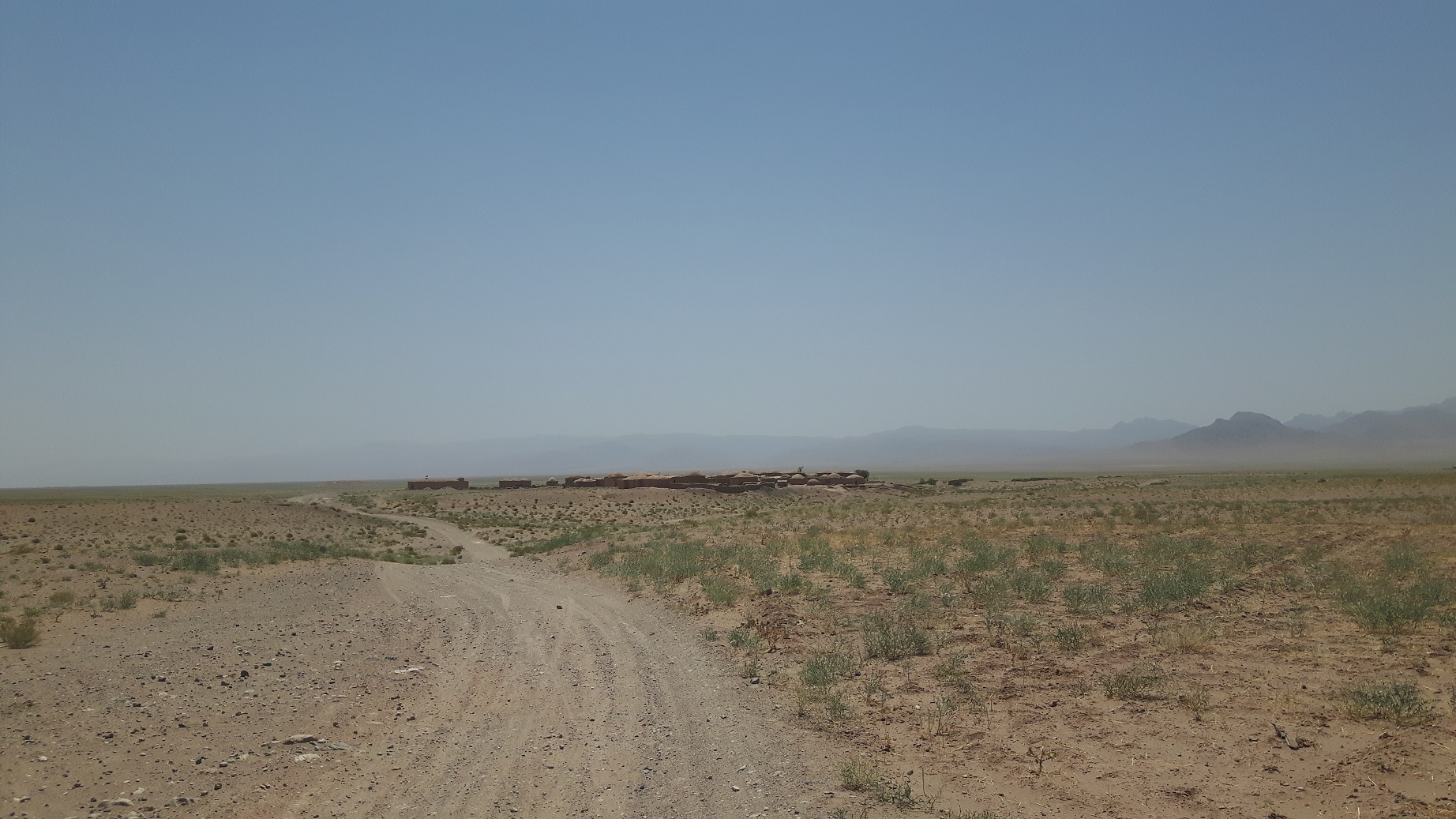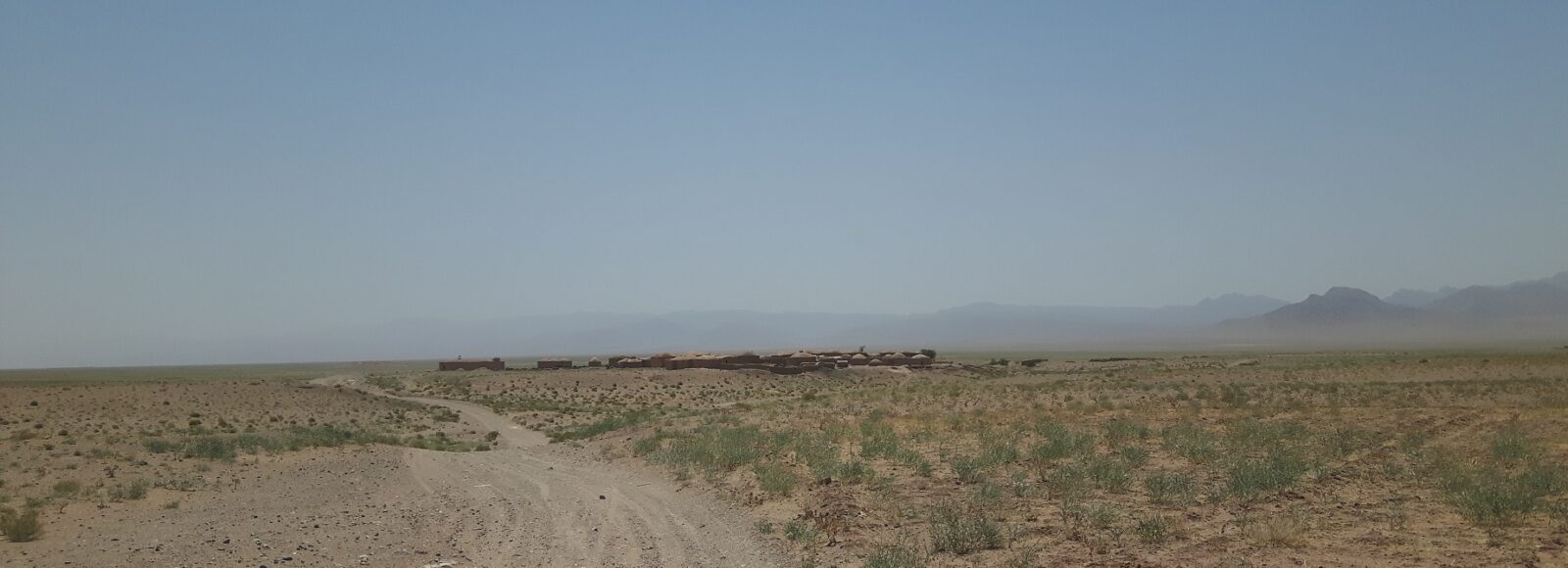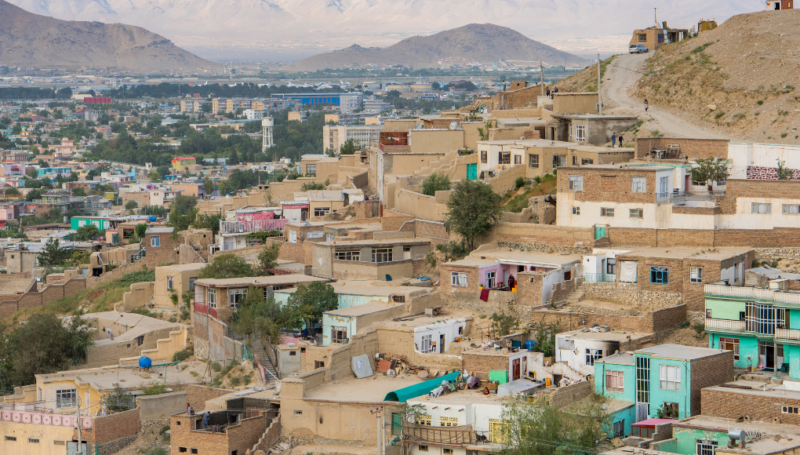
Small settlement seen from afar in the Western region of Afghanistan ©REACH/2018
Since January 2017, over 200,000 people have been displaced internally in Afghanistan as a result of the ongoing conflict according to the 2017 Humanitarian Needs Overview (HNO), with approximately 20% of all displaced persons believed to be residing in Hard-to-Reach areas. In Afghanistan, a Hard-to-Reach district is most commonly understood as a district where access for humanitarian actors is limited due to safety/security issues such as active fighting or control by Armed Opposition Groups (AOGs). It is believed that 45 out of the 400 districts of Afghanistan are fully or partially under the control of AOGs, with a further 118 districts regularly falling in and out of government control. Access limitations associated with these areas generates a lack of reliable data and reduces the adequacy of on-the-ground response. In collaboration with the UN Office for the Coordination of Humanitarian Affairs and the Humanitarian Access Group, REACH is implementing the Afghanistan Hard-to-Reach Assessment.
To provide geographically- and sectoral-relevant findings, REACH first identified Basic Service Units in each districts – a geographic area populated by a group of people having particular common demographic and socio-economic features and sharing the same services and facilities – followed by a Key Informant-driven multi-sectoral assessment of needs, vulnerabilities, and access constraints. The first round of data collection took place between in March 2018, consisting of 1,126 Key Informant Interviews across all assessed districts.
Unlike findings in Informal Settlements highlighted in the 2017 Multi-Cluster Needs Assessment, which found that shelter and food were the most pressing needs, findings in Hard-to-Reach districts highlight education and healthcare as the biggest vulnerabilities. With a 2:1 ratio of boys to girls attending school and 20% of respondents indicating recent school closures in their communities, education was flagged as a main priority need in Hard-to-Reach districts. Shortages of funds, facilities and qualified teaching staff contribute to this need. In the health sector, on average, 13% of Key Informants reported the number of doctors available to their communities has decreased, and 10% reported closures of medical facilities in the past 30 days. Medical supplies were flagged as a need as well, with 35% of respondents identifying a shortage of medical supplies in their communities over the past 30 days.
This assessment further emphasises key protection concerns in these areas, with a particular emphasis on the presence of mines/Explosive Remnants of War, which was found to be the most prevalent protection concern across all assessed districts. Indeed, 56% of Key Informants overall indicated a presence of landmines in or around their communities, with 85% of them reporting the areas where landmines are present are unmarked.
Following this initial round of data collection, a second round of data collection is expected to take place in May, building on lessons learnt from the first round and enabling comparison between both rounds of data collection on key needs, vulnerabilities and access constraints. Ultimately, findings from this assessment are intended to inform the 2019 HNO and Humanitarian Response Plan, shaping the way Hard-to-Reach districts are to be progressively included in the humanitarian response in Afghanistan.
Please find here the Hard-to-Reach Assessment of March 2018.
Please find here the 2017 Multi-Cluster Needs Assessment on Shelter and WASH in Informal Settlements and on Food Security in Informal Settlements.









